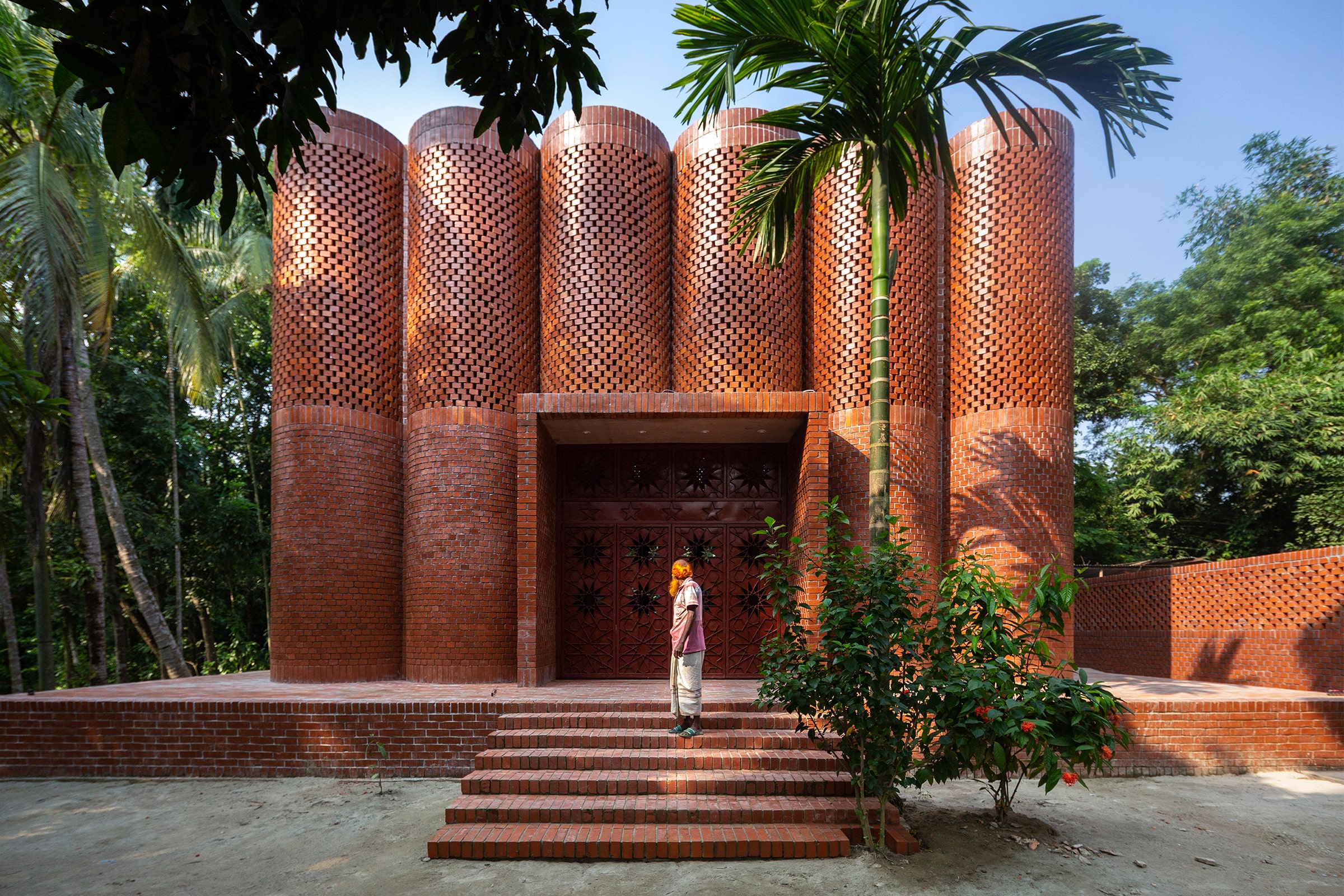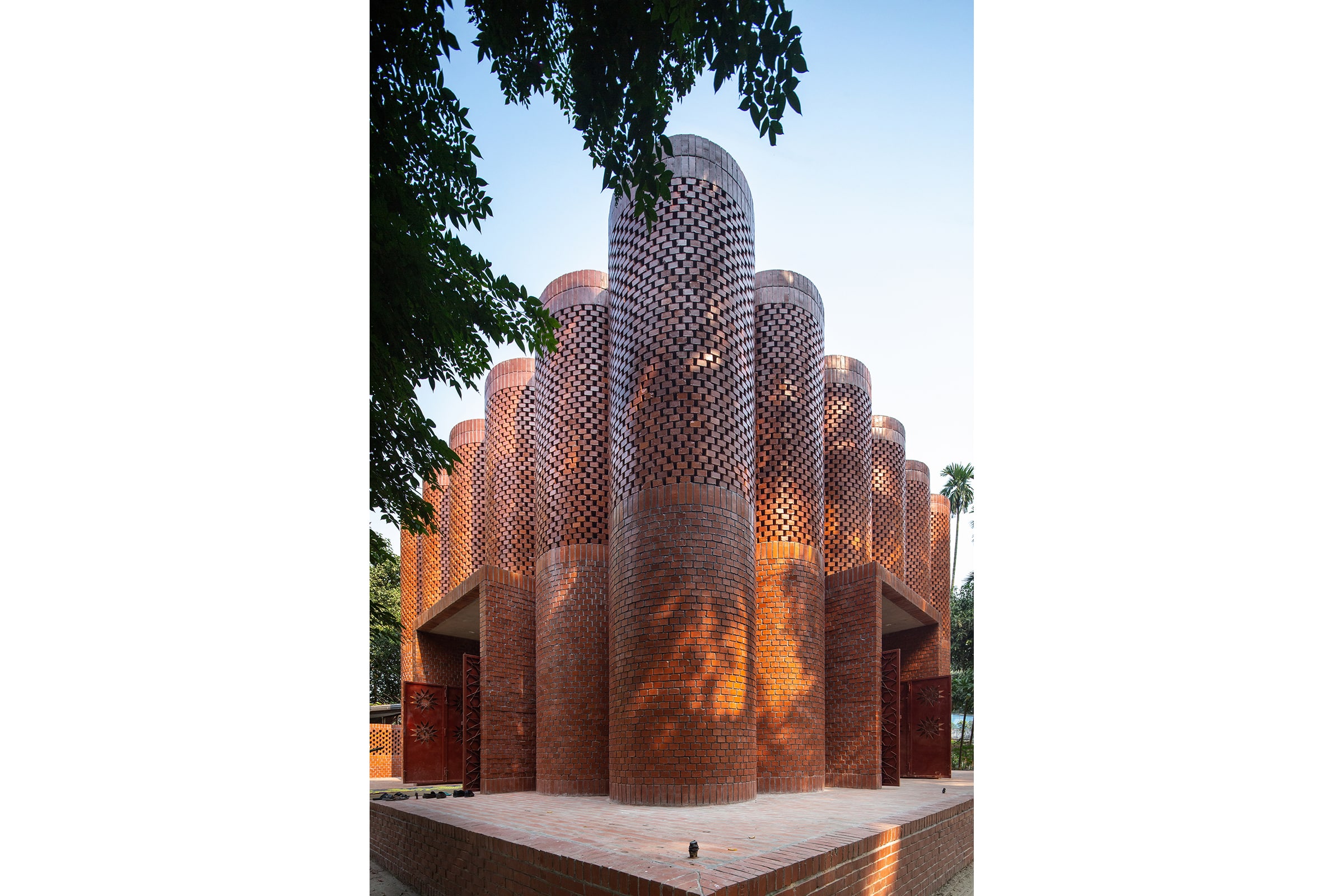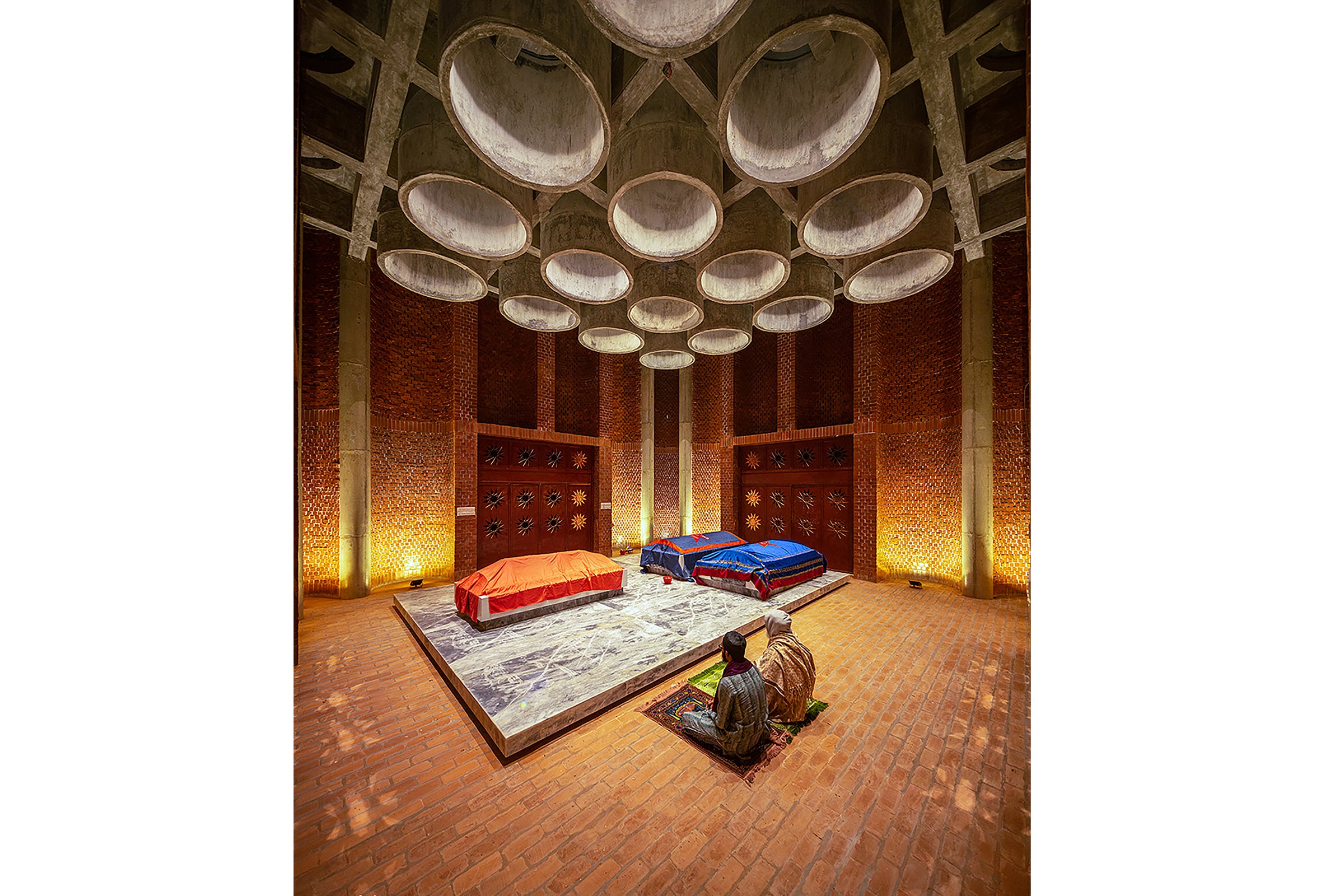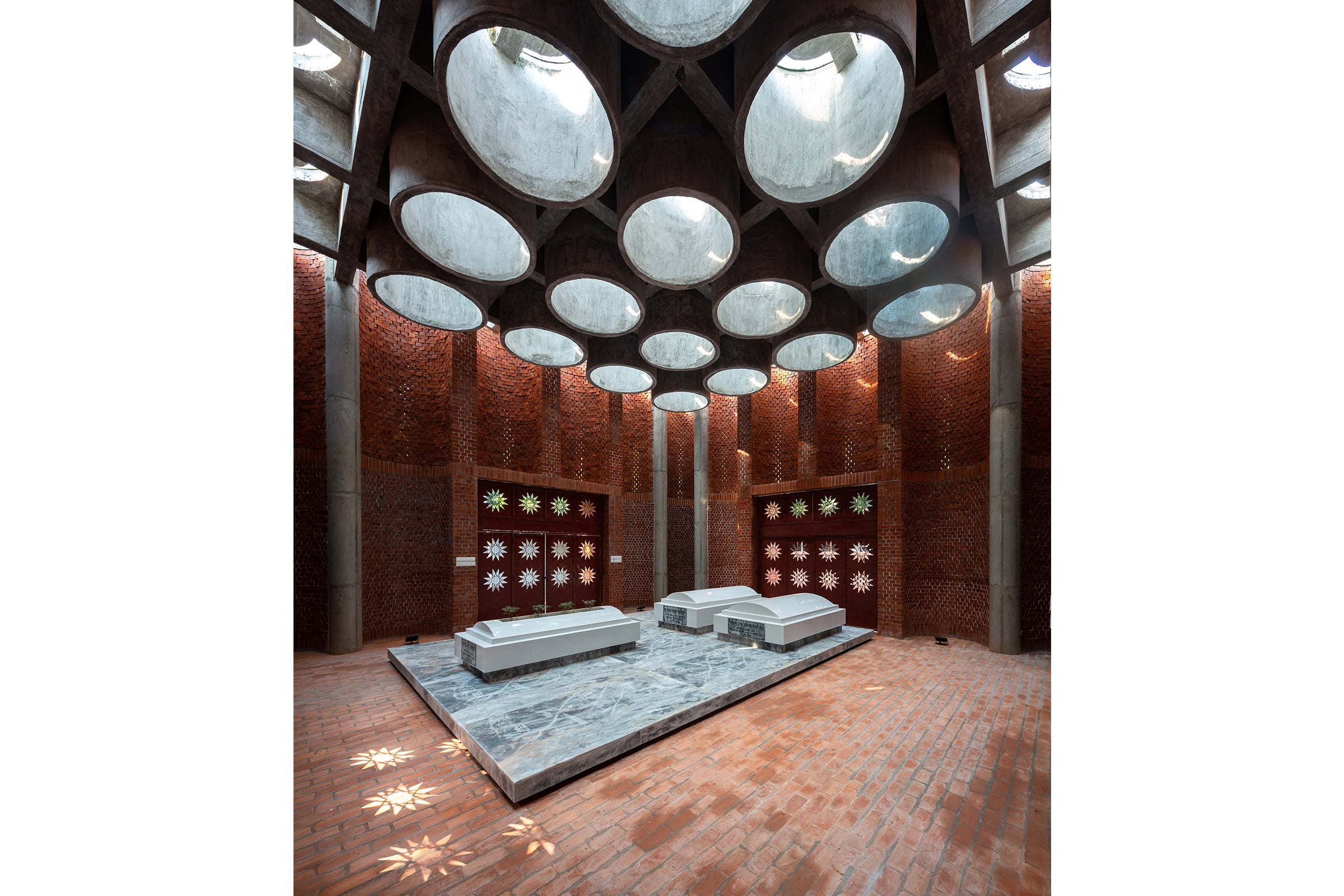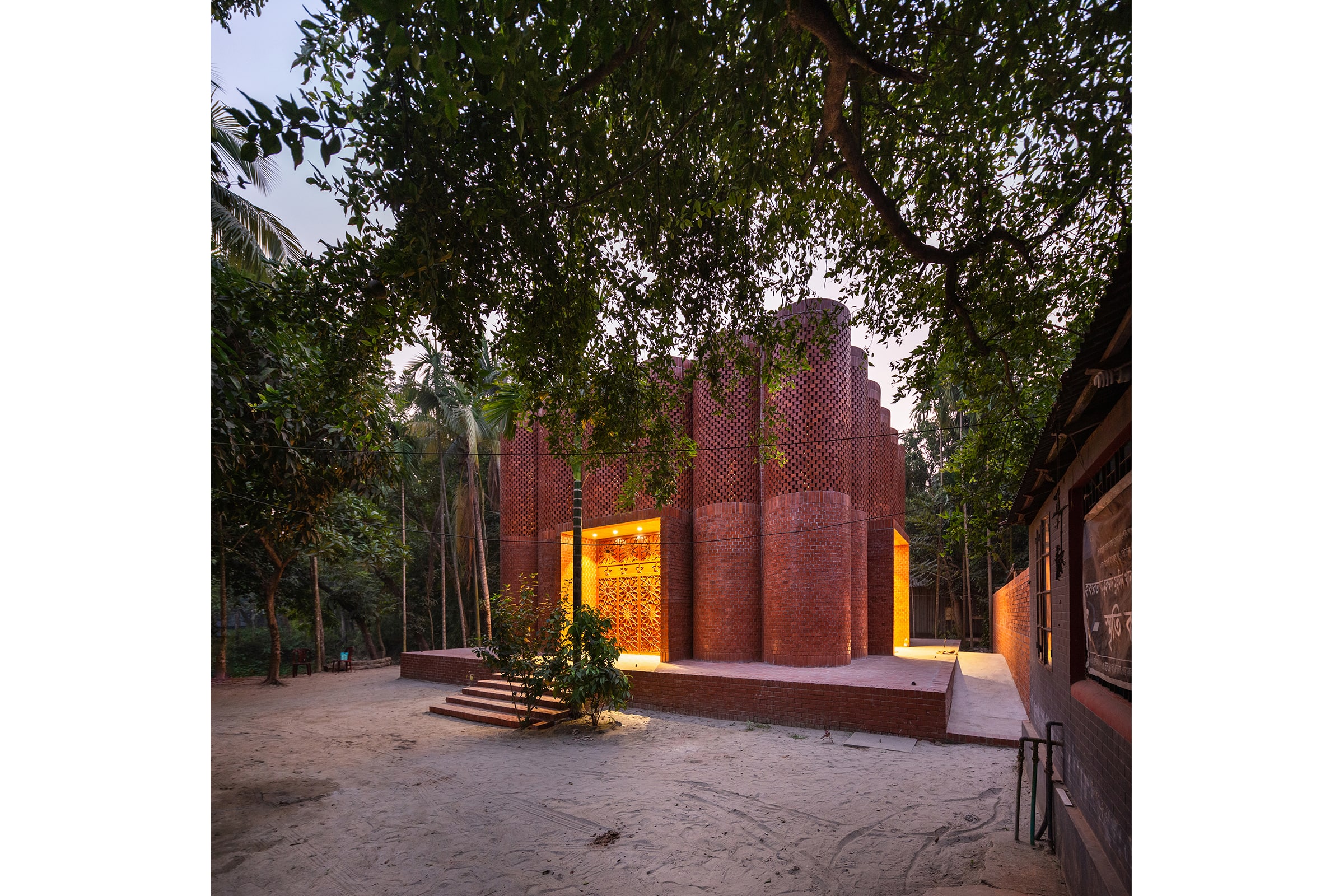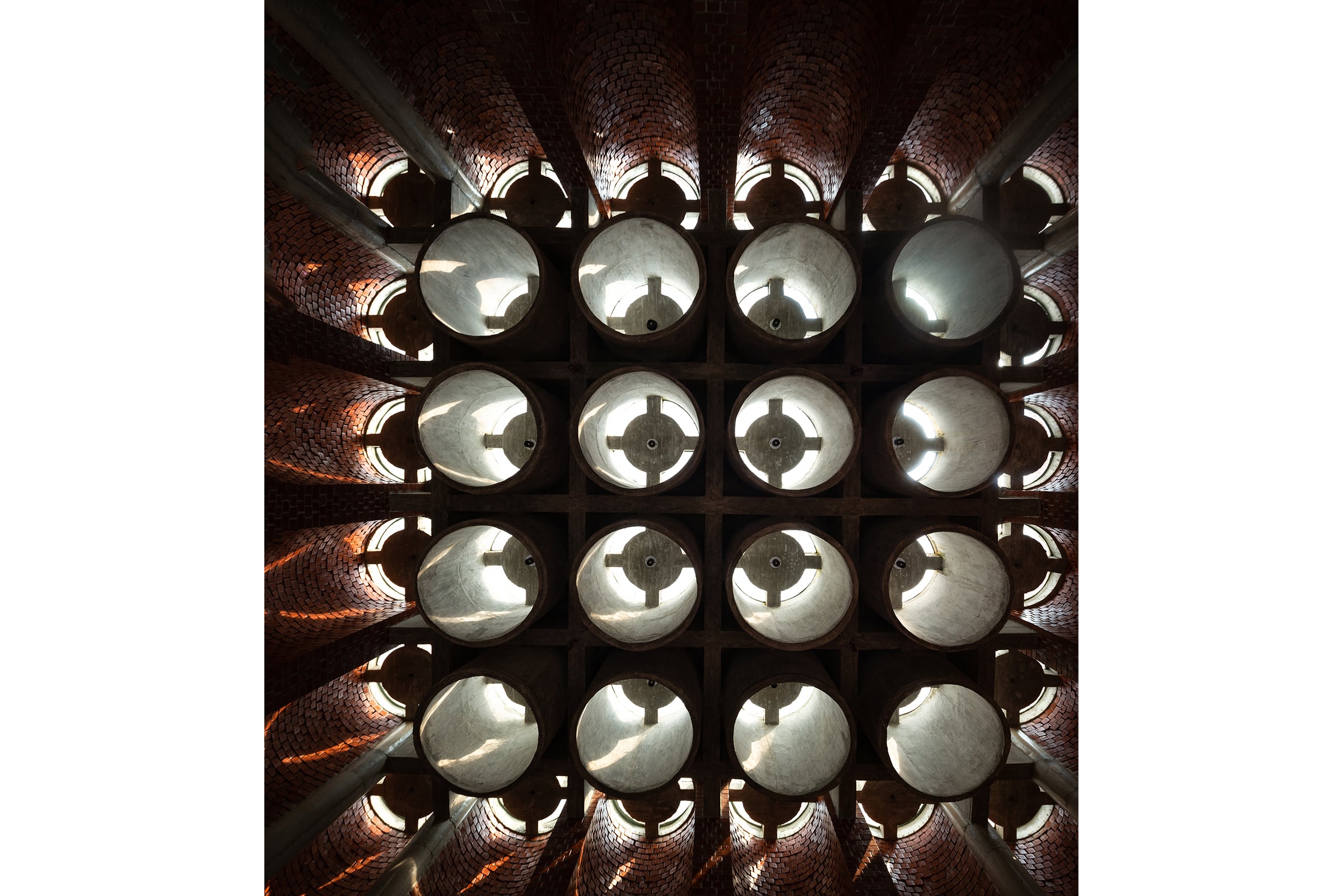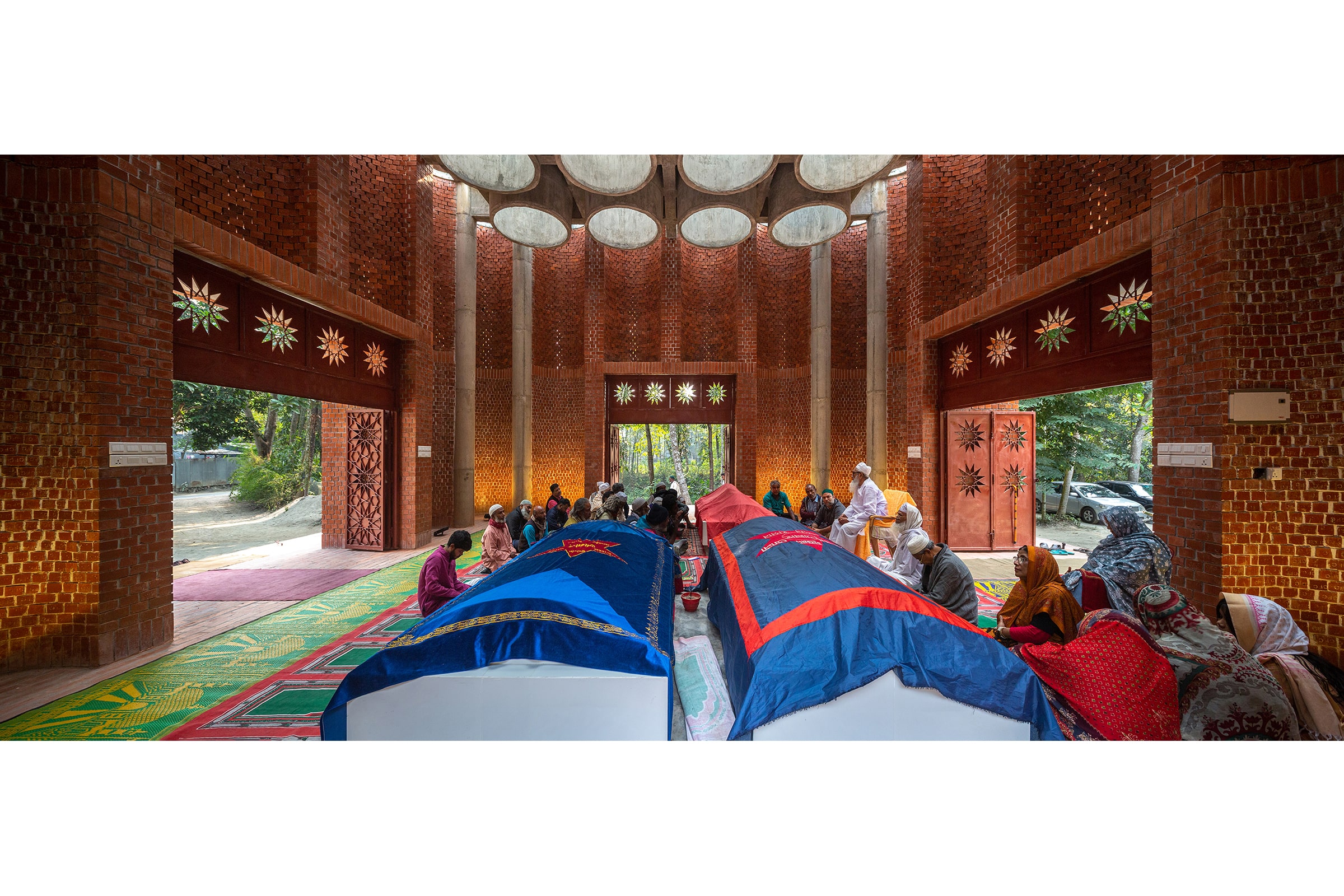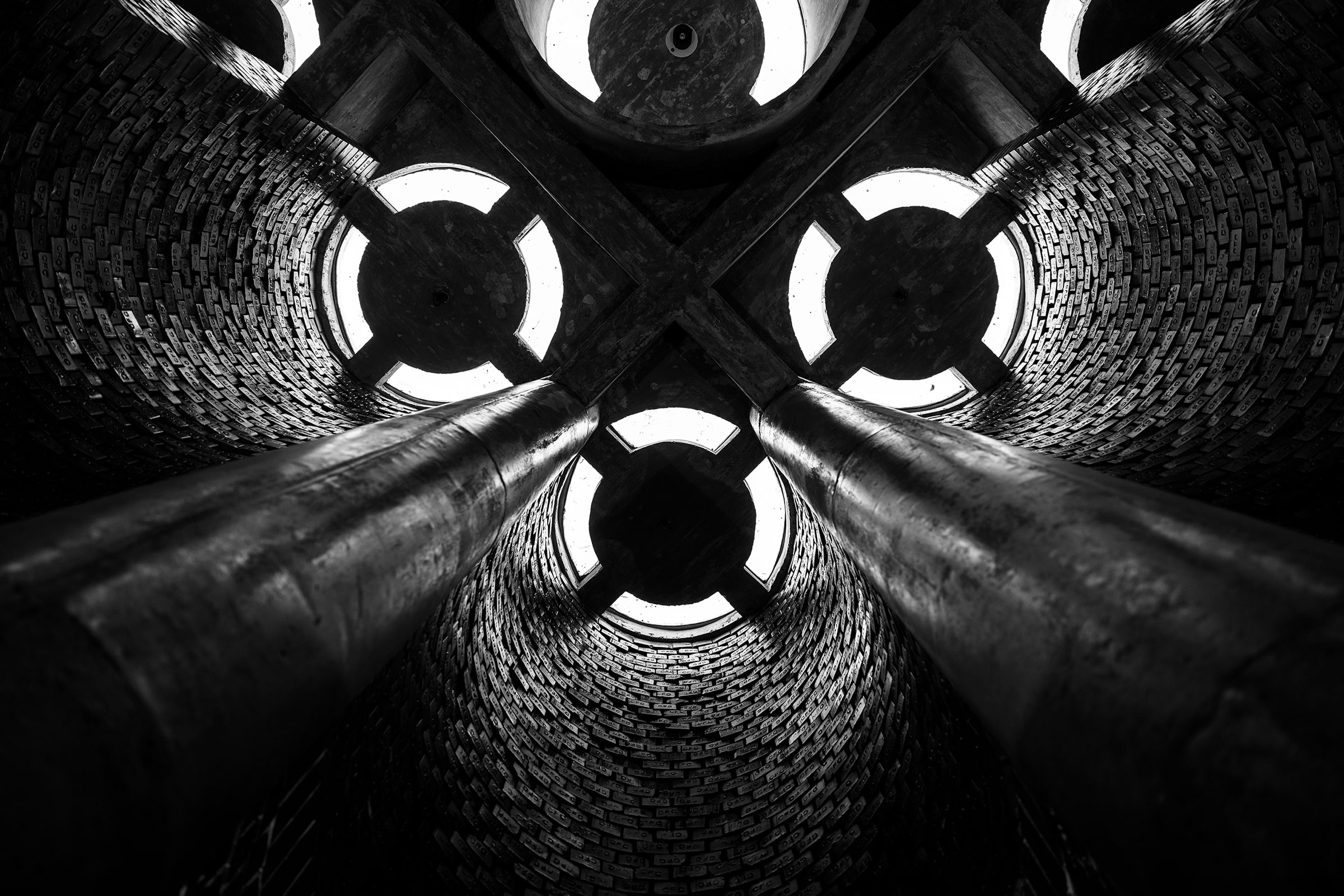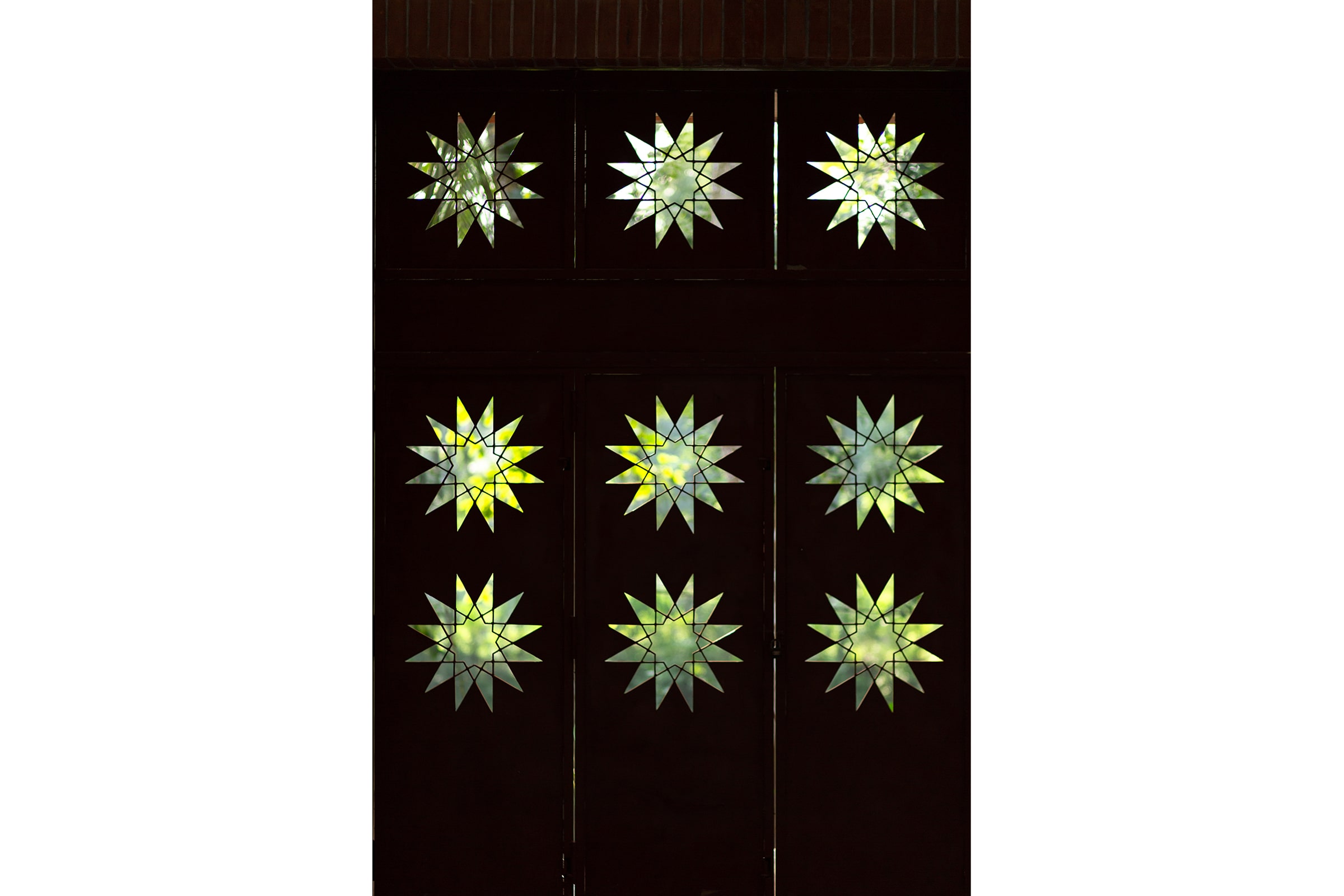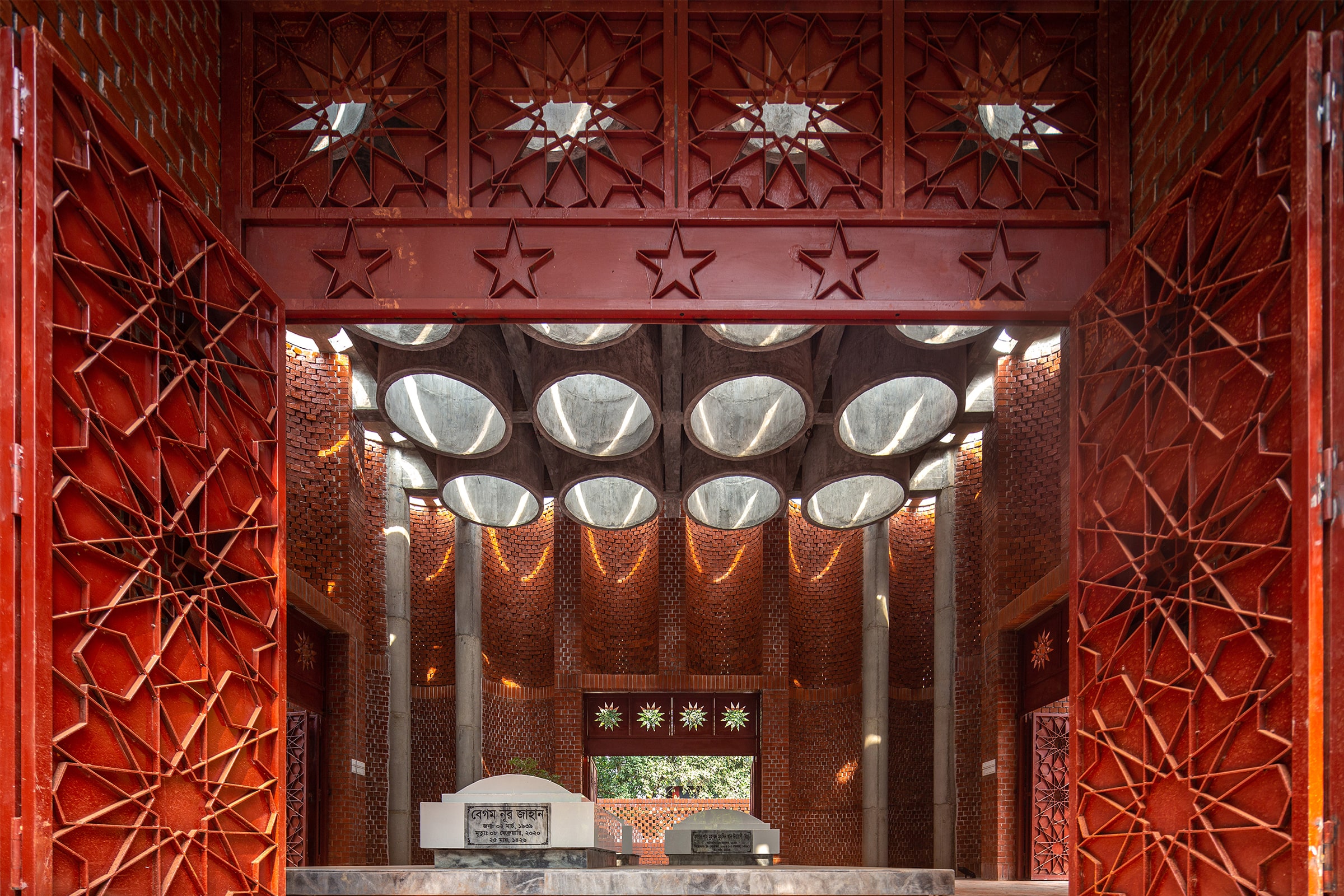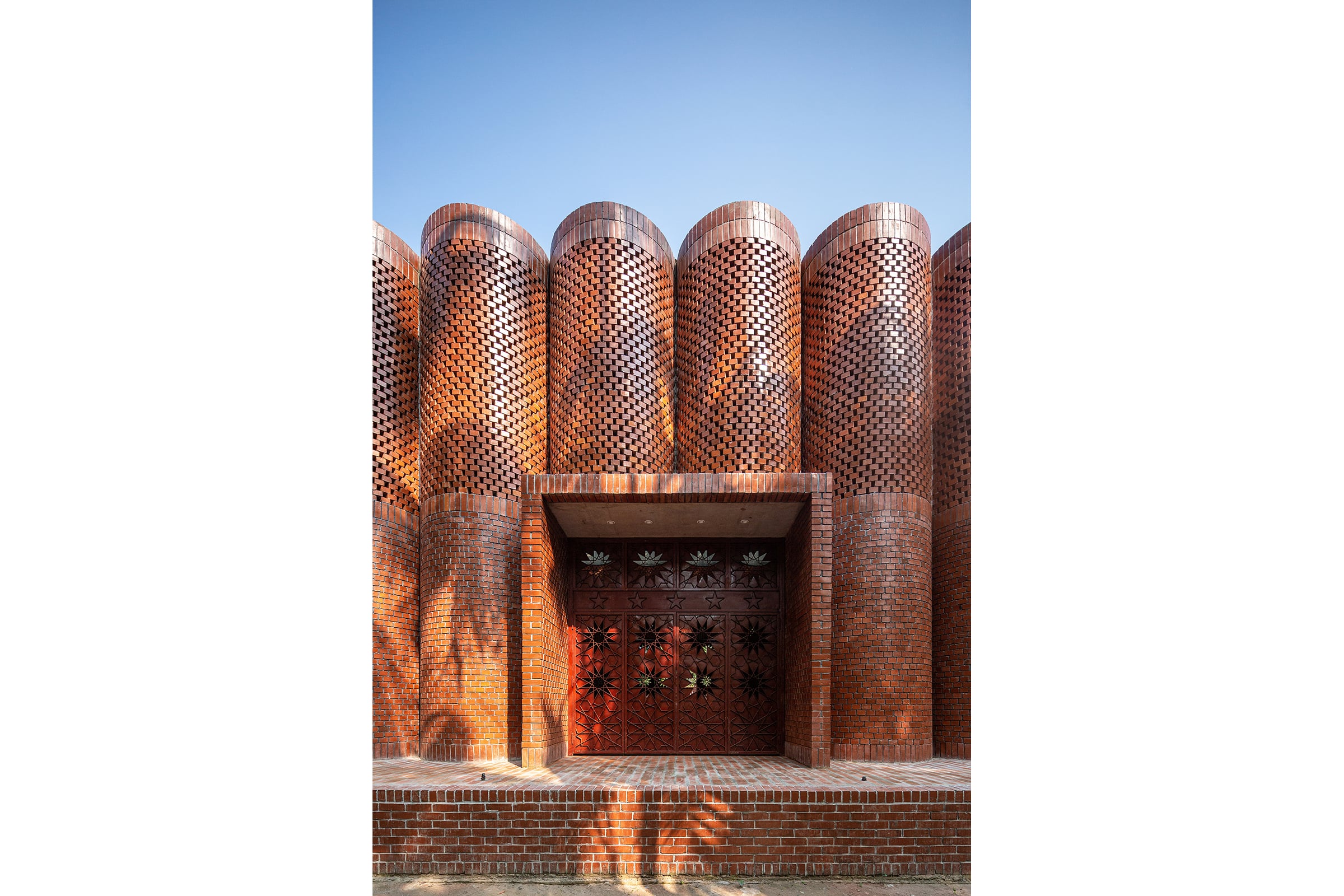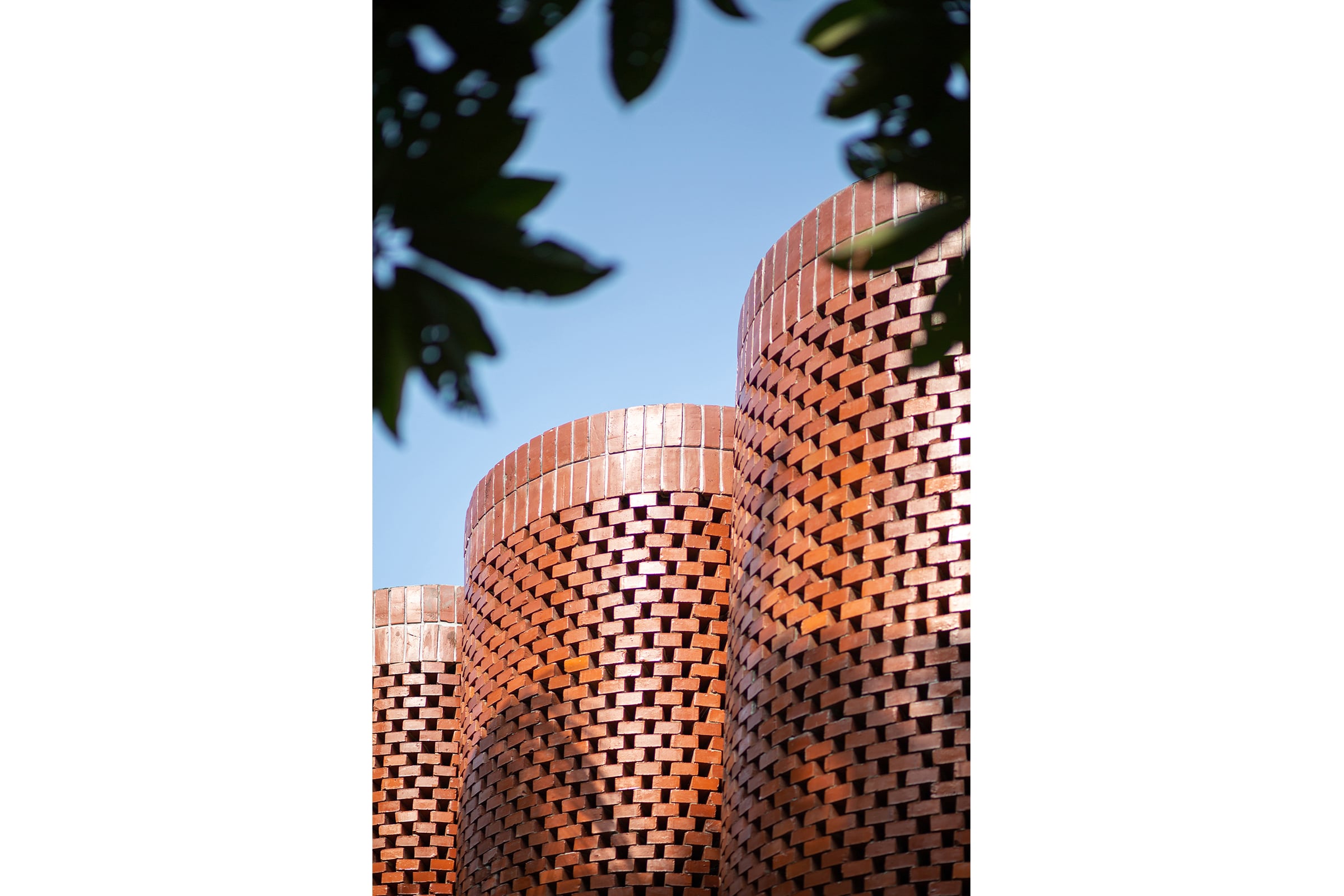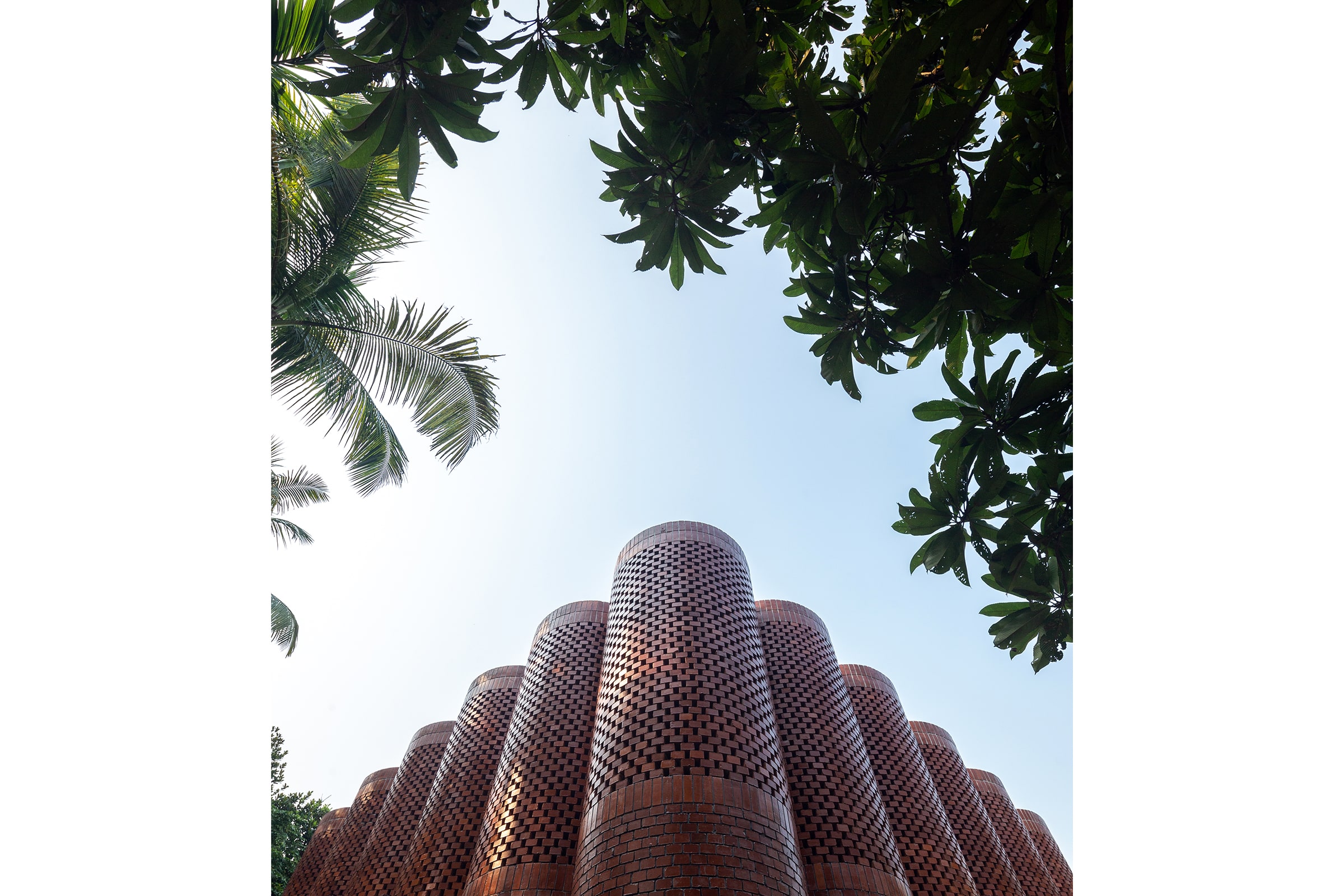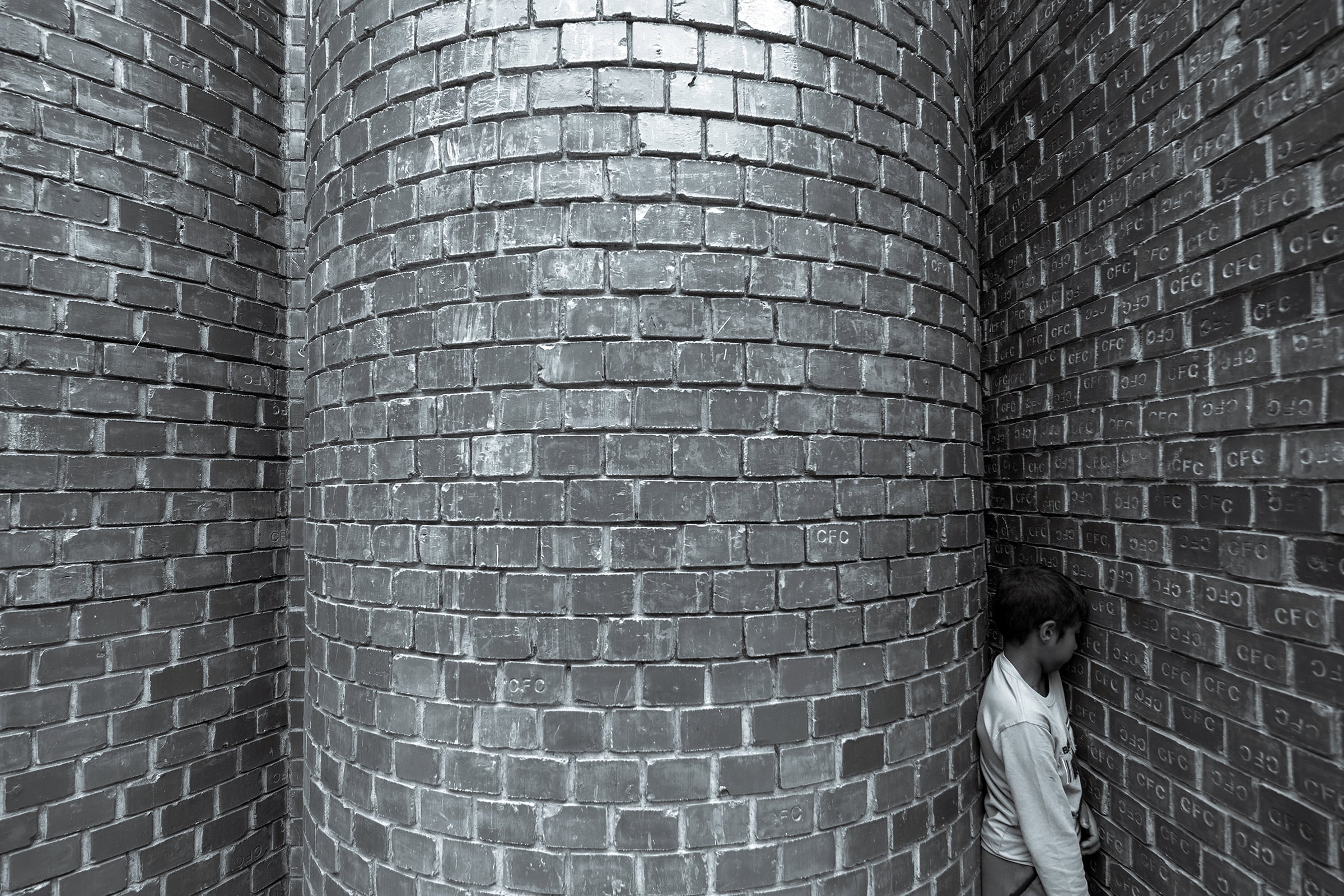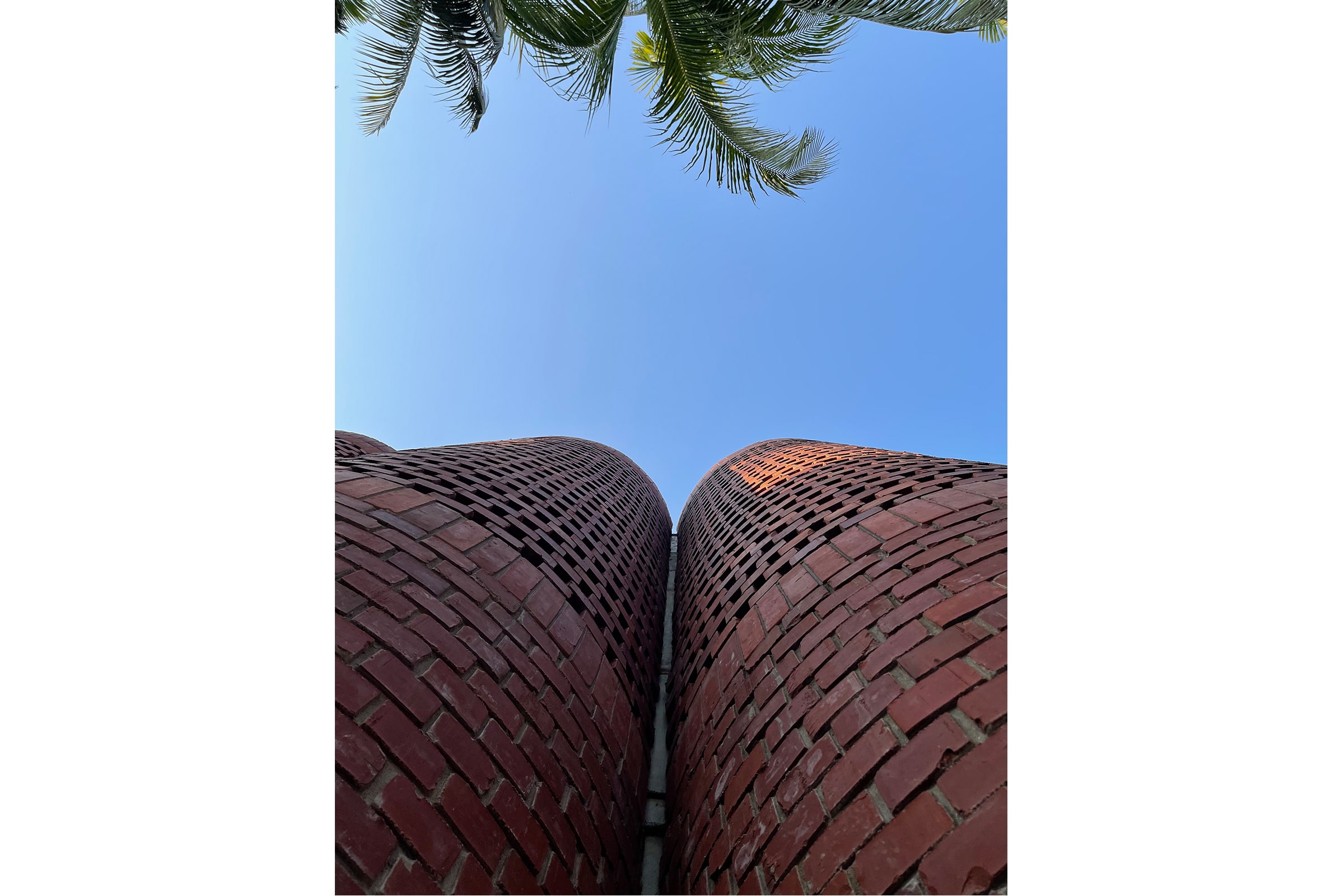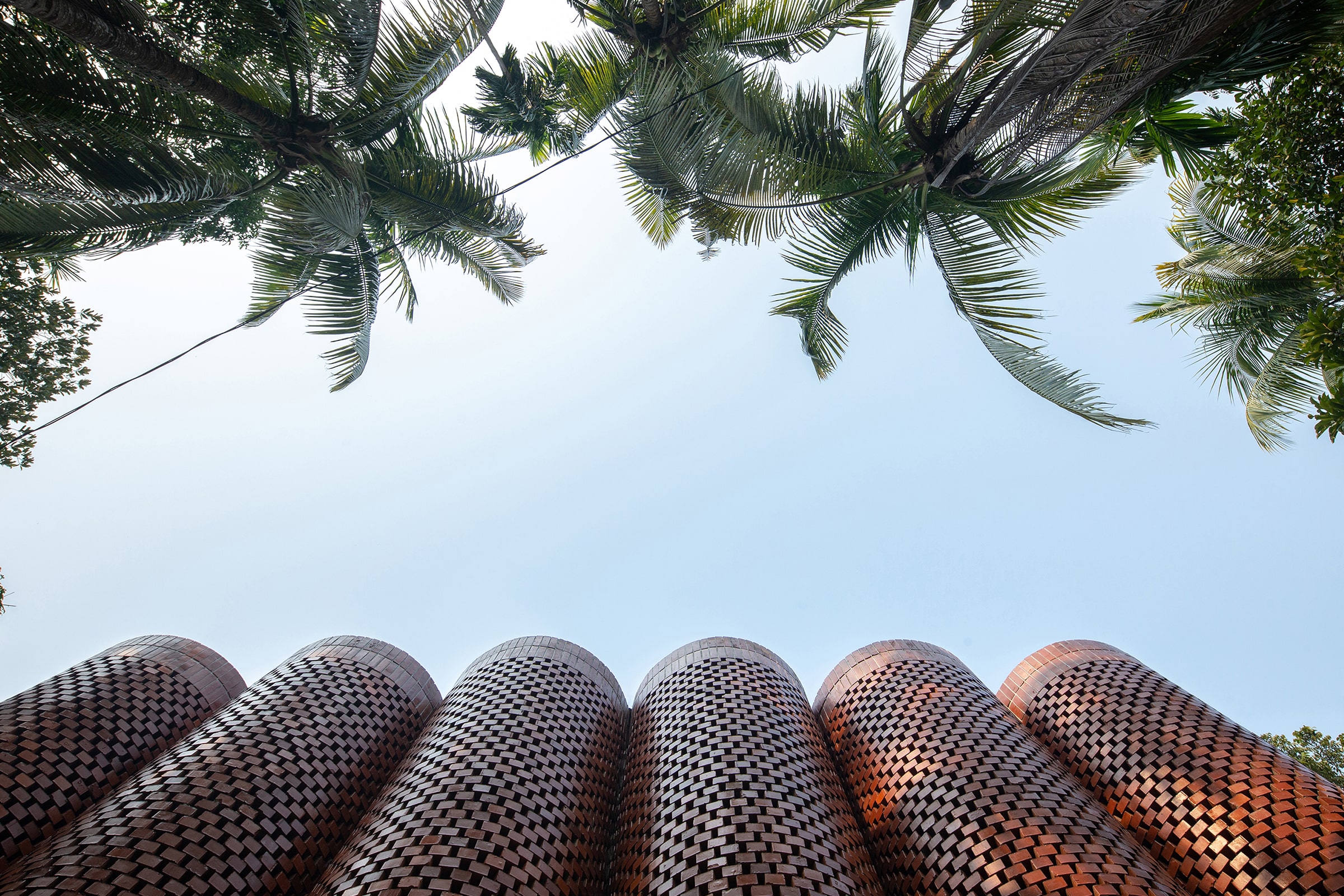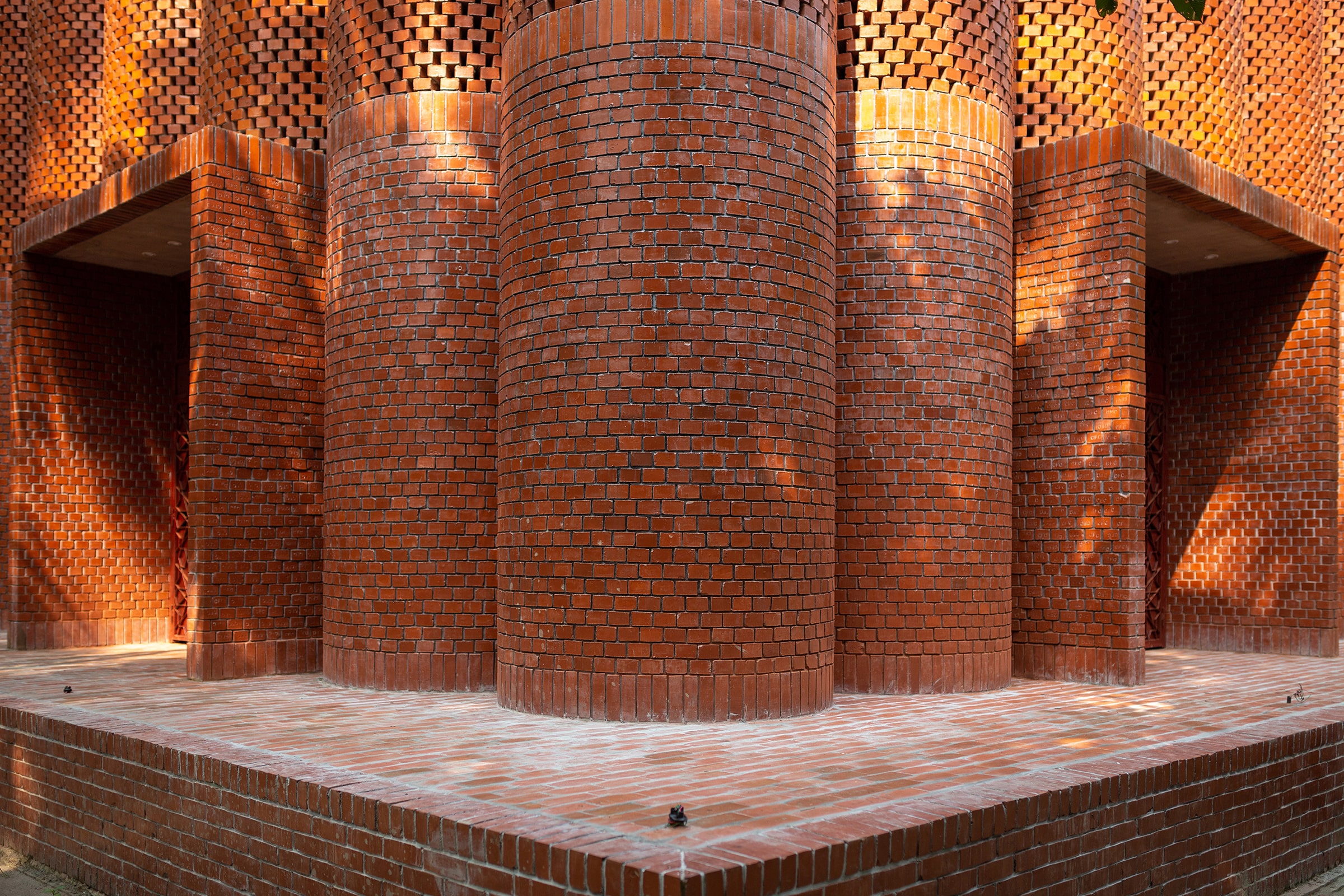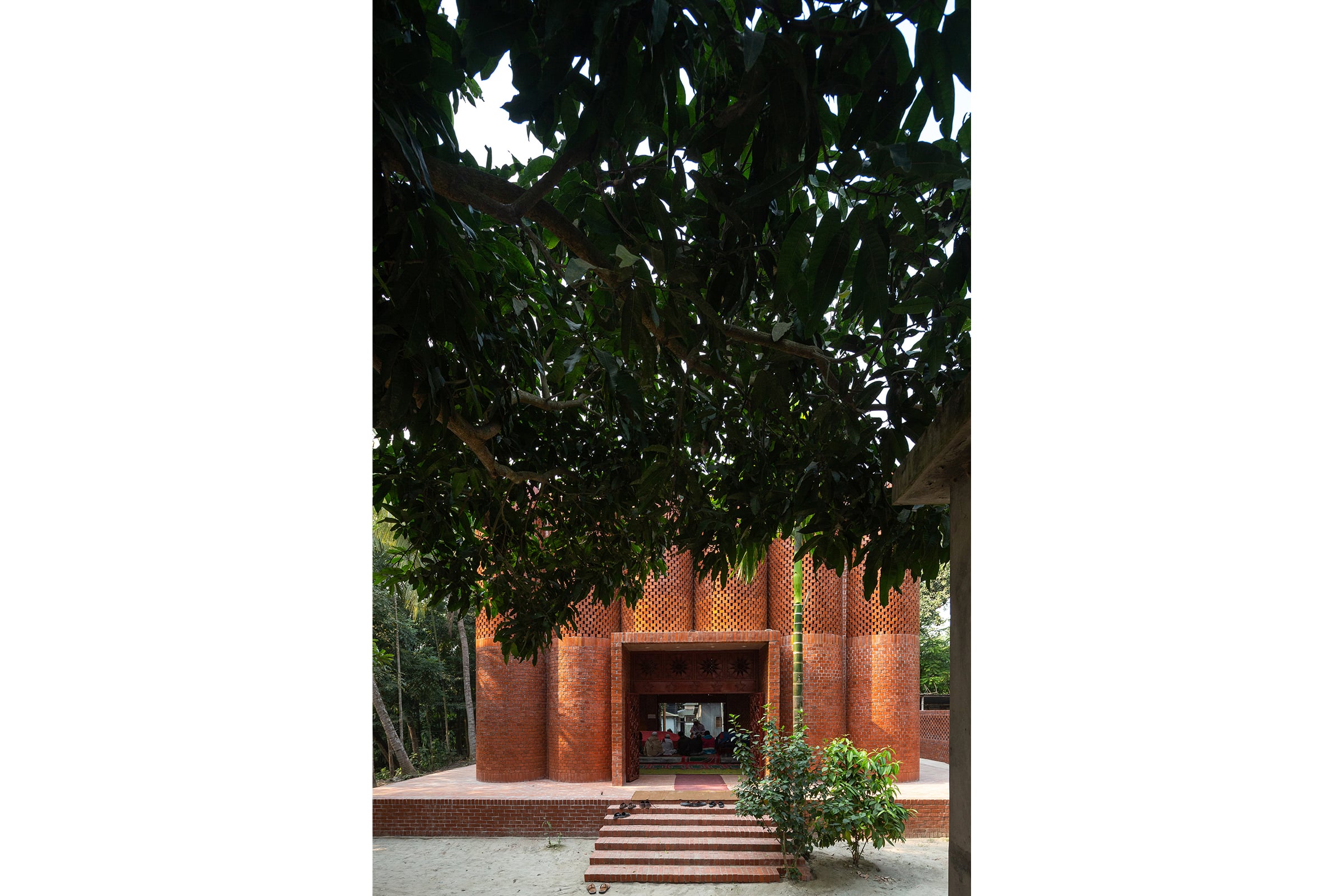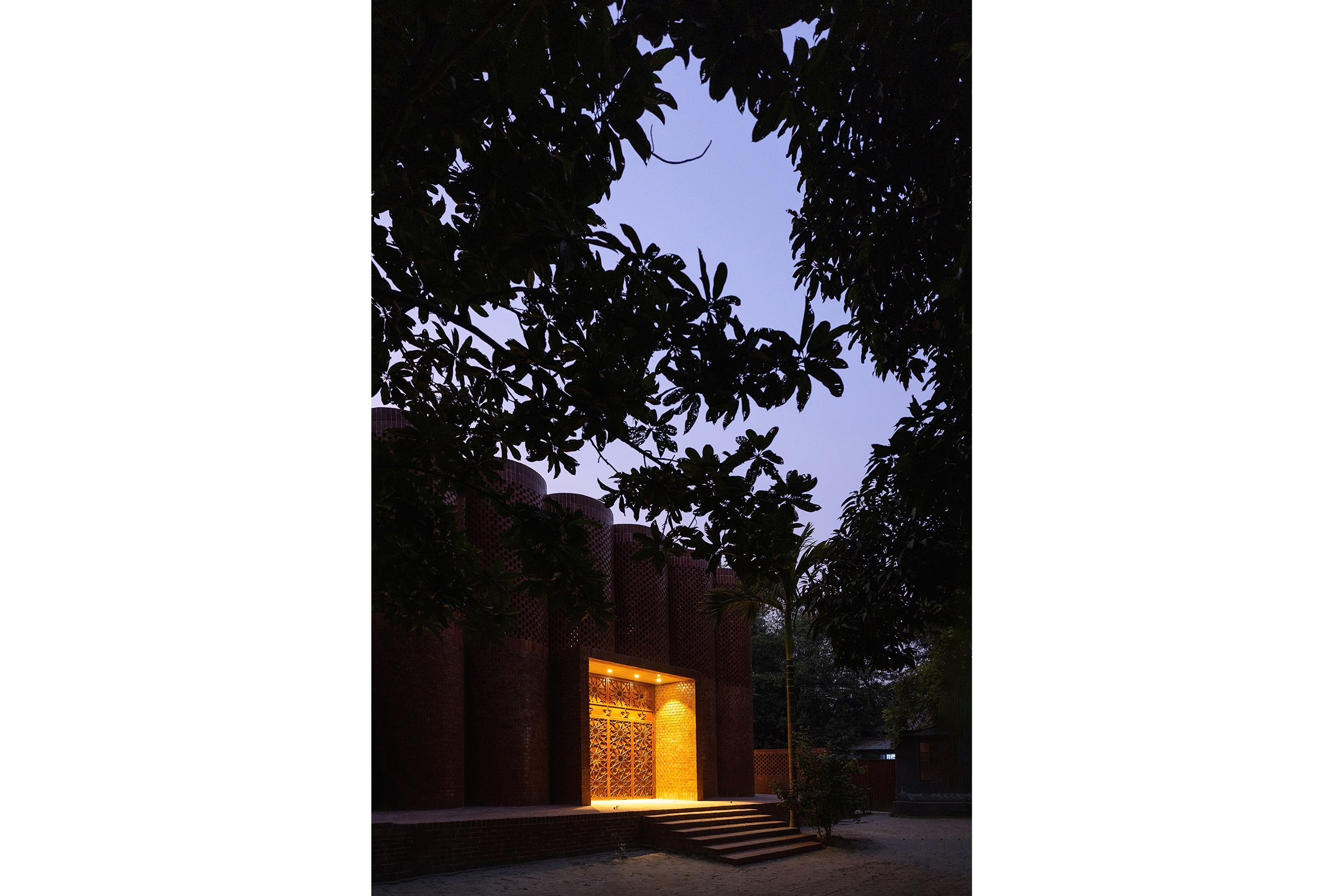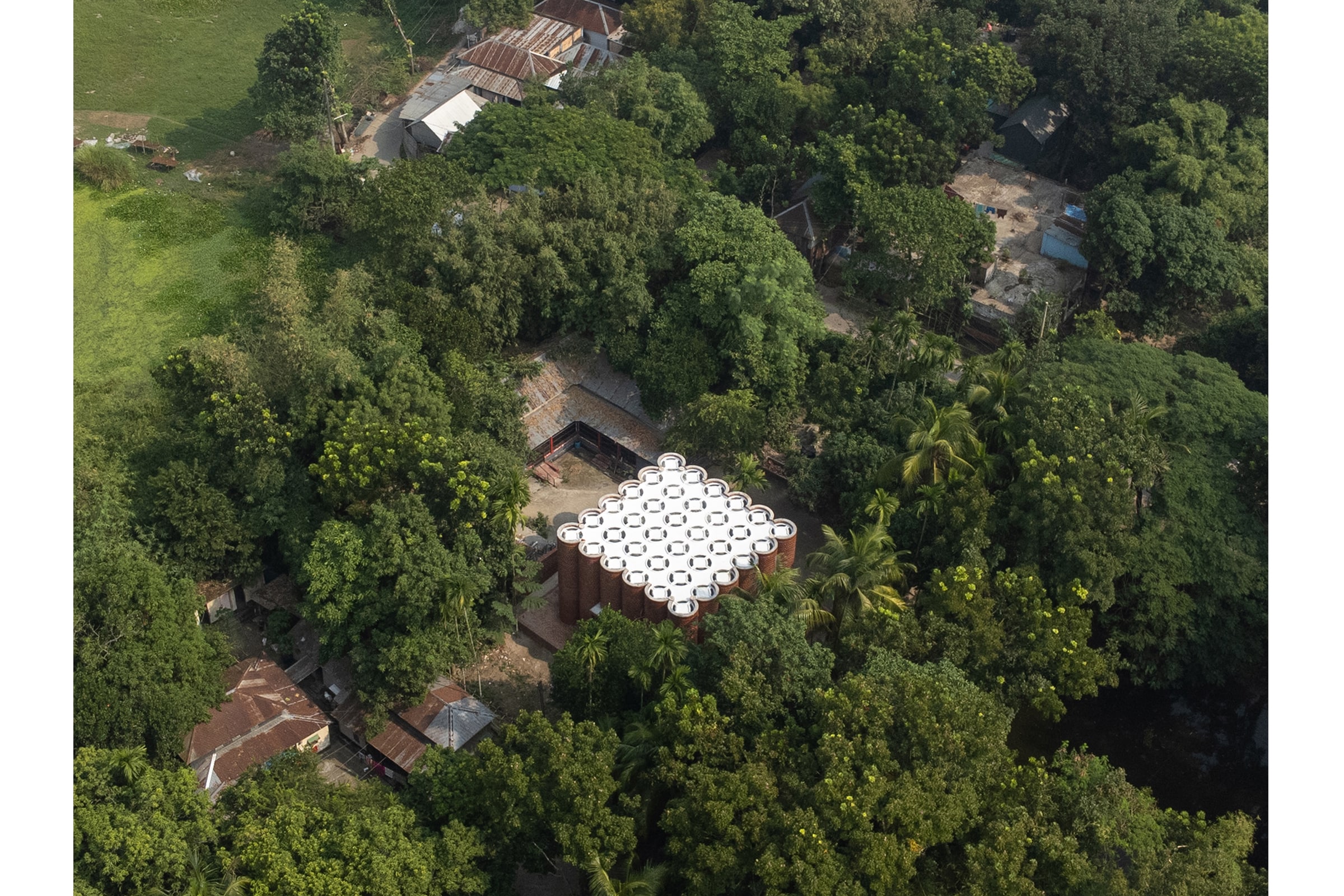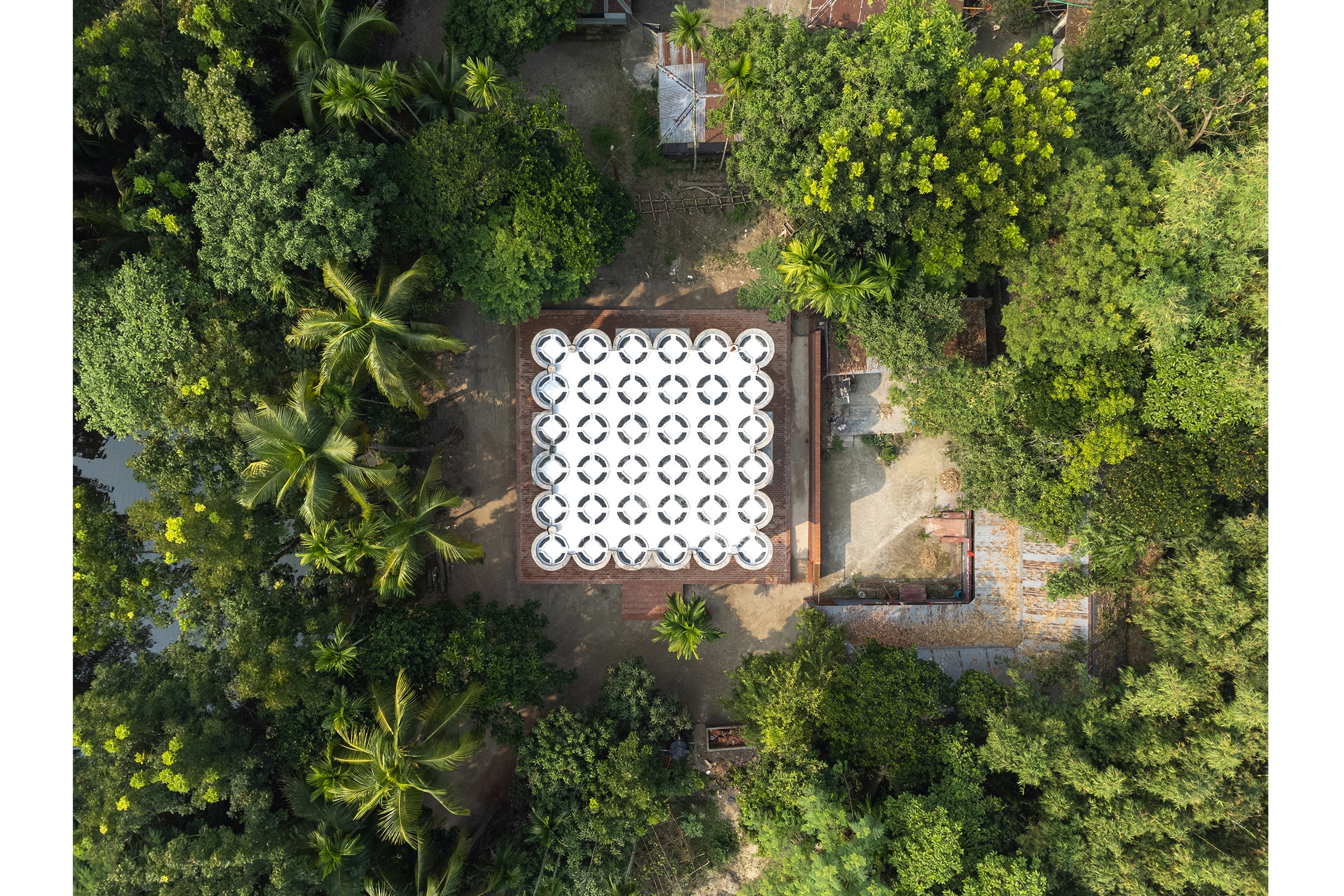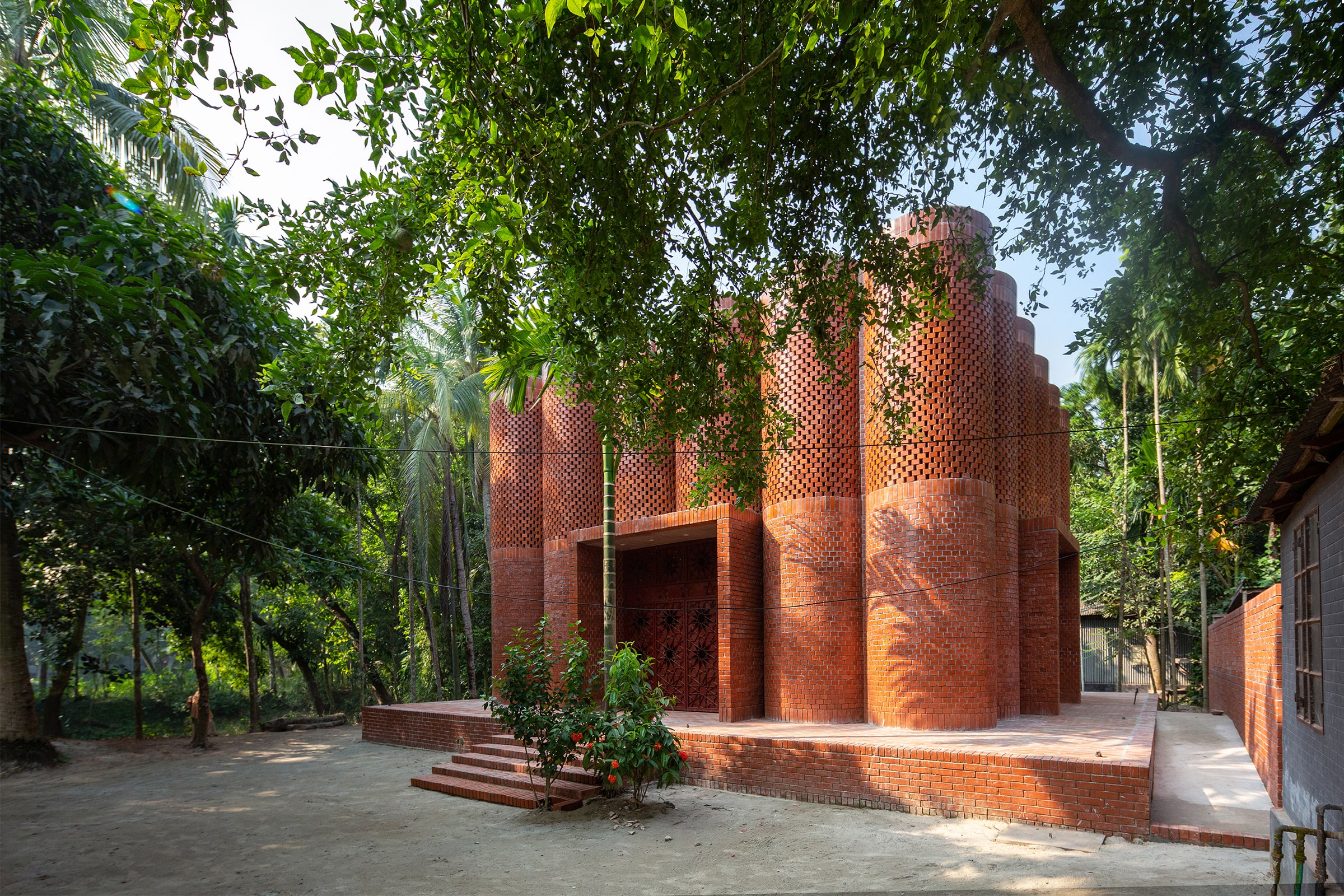Shah Muhammad Mohshin Khan Dargah (Mausoleum)
Shib Bari, Hijuli, Manikgong, Dhaka, Bangladesh
2022
Area: 2116 Sft
The Project is owned by a renowned
Scientist of Bangladesh and he is the eldest son of ‘Pir’ Shah Muhammad Mohsin
Khan, who was the famous religious leader of the Manikgonj. The project is the
ancestral dargah of the owner. He commissioned Ar. Md. Sharif Uddin Ahammed for designing the Dargah (mausoleum)
in his native home Hijuli, Manikgong, to reminisce the memory of the
“Pir’ and develop an institution for exercising Islamic Knowledge for the
betterment of society. The project
holds much importance due to the contribution of the ‘Pir’ in spreading Islamic
knowledge and practice in the locality.
The Design
approach evolves with techniques, available resources, ideology, and local
culture and transforms these into an integrated solution that is naturally
adopted by the local community. Generally,
a Dargah is a home for the grave of a revered religious figure, often a Sufi saint or
dervish. In Persian “Dargah”
means "Portal". Metaphorically, Dargha is the home where the earthly
body rest and the soul travel to paradise through the portal and the chandelier
of paradise connects the earthly body to the higher power by blessing them with
holy light. The outer shell is the replication of our reality but the inner
space moves the reality beyond it.
The plan of
Dargah adopted the same square shape plan measuring 36’x36’ and accommodates
three graves on a white marble platform. Unlike the Vitti, of the traditional
huts the plinth of the Dargah is also raised up to 3’. The height of the
structure is almost 24’ on a 3’square base. The ceiling is composed of
thirty-six, circles. Out of thirty-six circular punches
on the ceiling, sixteen become cylindrical droppings and hung from the
waffle ceiling. The side elevations of the Dargah are composed of reinvented
repetitive turrets creating a familiar yet iconic composition that draws the
attention of the community. The turrets are half circular and the upper part is
perforated jalis’ for natural lighting and ventilation. To Achieve uniformity
and create significance only red brick is used as the envelope of the Dargha. Local
masons and construction methods were employed due to the limited resource and budget.
